Temporary Anchorage Devices: What Are They?
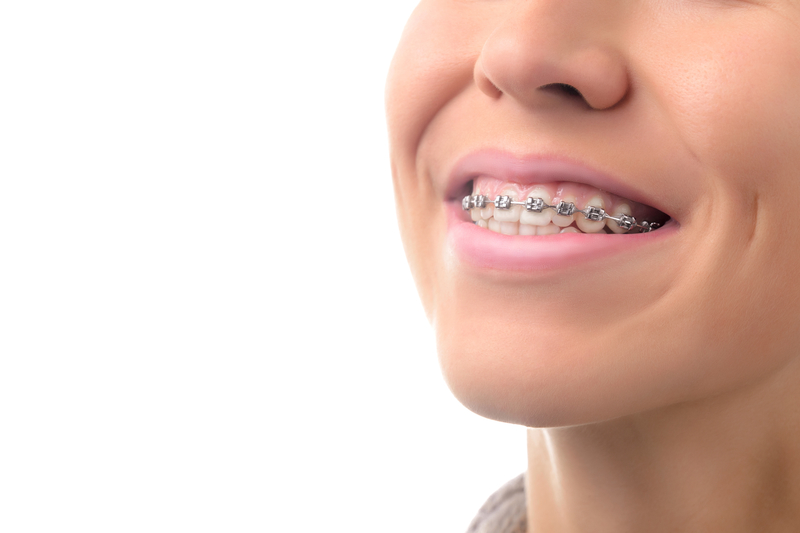
Whenever our teeth need an extra push to shift them into a straighter position, orthodontists will typically install a temporary anchorage device, commonly known as a “TAD.” Although they’re not used in every case, they help pull, push, and lift difficult to adjust teeth into the correct position. If your orthodontist recommends that you have a TAD, read through this guide to understand how they function and what you can do to maintain them!
Origins of Orthodontia
Poorly aligned jaws and teeth have been a nuisance to mankind since the beginning of time, so it’s no surprise that orthodontics has been around for so long. Archaeologists have found human remains with crooked teeth dating back 50,000 years; interestingly enough, the remains of some ancient civilizations, like Egypt, have been found with crude metal bands around their teeth, a form of orthodontics very similar to braces that we see nowadays. The ancient Greek, the Etruscans, and the Romans also practiced orthodontia and kept records of their discoveries. The ancient Greek physician, Hippocrates, was the first to describe teeth irregularities around 400 BC, and centuries later, Celcus would advise bringing newly emerging teeth into their proper position by pushing them with your fingers.
By the 1700 and 1800s, orthodontics was developing rapidly. Pierre Fauchard, the “Father of Dentistry,” would create the bandeau that allowed teeth to align correctly by using a strip of metal with regularly spaced holes that fit around the teeth. During the 20th century, Edward Hartley Angle would identify the true properties of a malocclusion, or misalignment, and begin addressing them with an effective set of orthodontic appliances that were developed much earlier. By the 1970s, braces would further advance through the invention of dental adhesives that would allow orthodontists to stick brackets to teeth surfaces rather than wiring them around each tooth. Stainless steel replaced gold and silver that were previously used as the wire, which helped reduce the cost of braces significantly. Even with the impressive advances that we have made since the beginning of orthodontics, patients around the world still suffer from advanced teeth and jaw malocclusion that normal braces can’t resolve on their own. For the purpose of increasing the effectiveness of braces, other orthodontic devices have been invented to facilitate this process.
Orthodontic Devices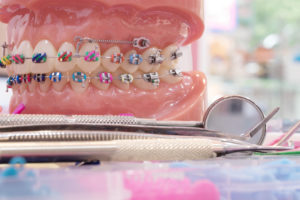
Whenever we think of “orthodontics,” we innately assume braces. Braces have two basic parts: brackets and wires. Wires move the teeth and brackets serve as a stationary holder for the wires. Contemporary braces can be stainless steel, gold-colored, or tooth-colored ceramic. Most braces go on the front of the teeth, but there are some, called lingual braces, that are fastened onto the backs of teeth that are virtually invisible. Lingual braces are not the same as clear aligners, which is another orthodontic device. Clear aligners are made of a transparent plastic-like material and are considered “invisible braces.” They are made to fit the patient’s teeth at different stages of treatment. Each set of aligners is worn for 1-3 weeks for at least 22 hours a day, and are designed to move the teeth incrementally until the next set is used. While these types of braces are a very common sight to see in many homes, schools, and workplaces, they aren’t the only devices used to move teeth and align jaws. Power chains are sometimes used with braces for an added push. They are stronger than the traditional elastic rings and can apply an extra force when needed. The last orthodontic device that is commonly used, although many patients don’t know what their purpose is, is a temporary anchorage device, or TAD.
TADs
Temporary anchorage devices, most commonly known as TADs, are used in some orthodontic cases to help shift the teeth into a straighter position when traditional braces can’t do it on their own. For this reason, not everyone needs them. TADS use titanium mini-screws (sometimes called mini-implants or micro-implants) that provide a fixed object that can be used to push, pull, lift, or intrude teeth that are being straightened. TADS don’t move and can be placed in many different parts of the mouth, so they are highly efficient at moving difficult teeth back into proper alignment. Before TADs are ever inserted into your mouth, though, your orthodontist will evaluate your teeth and determine whether your malocclusion is severe enough to receive a TAD. Before insertion, your gum tissue and jaw area will be numbed so that the procedure will be nearly painless. The TAD is then placed into your jawbone, and will eventually be removed once your orthodontist feels that it is no longer needed for straightening your teeth.
Just like braces, it may take a couple of days for the discomfort to subside and your mouth to get used to the TAD. Try taking an over-the-counter pain relief medication to alleviate any excessive discomfort. An important part of maintaining your TAD is continuing your oral hygiene regimen. Continue to brush your teeth at least twice a day and use mouthwash with antimicrobial ingredients. As long as your gums are healthy throughout the duration of your treatment, you shouldn’t have any complications with your TAD.
Get Straighter Teeth Today
To learn more about TADS, or to schedule an appointment to begin your treatment plan for braces, call Belmar Orthodontics at (303) 225-9016! At Belmar Orthodontics, we have a highly skilled and experienced team that is happy to help you start your journey to a healthier and happier smile.
What Is an Orthodontist?
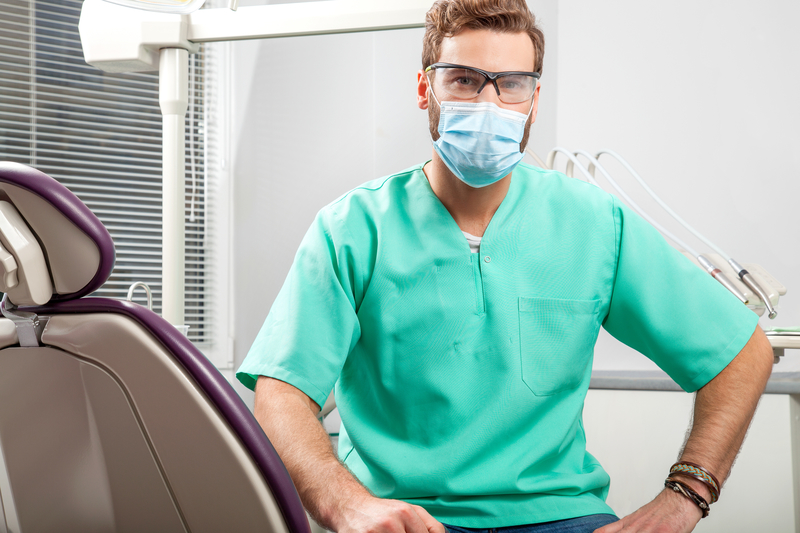
If you want to be an orthodontist, you have at least 10-12 years of schooling ahead of you. Orthodontists are very similar to dentists, but they perform completely different tasks in an office than a dentist would do. This is why you need to see both an orthodontist and a dentist if you have braces. See what services they provide that no one else can!
Want to Become an Orthodontist?
To become an orthodontist, a person has to commit to at least 10-12 years of education, training, fellowships and more. Even after that time, and orthodontist must continue testing and studying throughout the years in order to do orthodontics. An orthodontist is a professional that specializes in correcting crooked smiles, bite and alignment issues, jaw problems and aesthetics of the mouth.
They do this through braces, which commonly consist of metal bracket and wire appliances. Those appliances mold the teeth and jaws into specific alignments and positions. Through focused pressure with these mouth appliances, a person with major bite, alignment, or crooked teeth problems can find themselves with a beautiful, functional smile. This is especially beneficial for patients who have oral health problems that cause them speech impediments and difficulty biting, chewing, speaking and functioning normally.
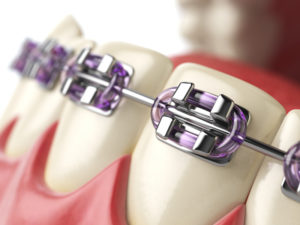
What Does An Orthodontist Do?
An orthodontist is a step above a dentist when it comes to their schooling. To become an orthodontist, a person must complete 4 years of undergraduate schooling at a university. They then apply for dental school and must be accepted. After 4 years of dental school, many students become dentists. However, orthodontists must continue to do at least 2 more years of orthodontic school and fellowships to do orthodontia as a profession.
Even though orthodontists are trained in dentistry, they do different work than dentists. They provide services such as correcting misaligned teeth and smiles, overbite, underbite, crossbite, and other alignment issues. Some are trained to provide surgical orthodontic procedures, or they work closely with an oral surgeon in correcting a misaligned jaw.
For patients who receive surgical orthodontics, an orthodontist will provide pre-surgical orthodontic care to align teeth and jaws as much as possible. A patient will then have oral surgery done to correct issues that can’t be done without surgery. Then, the jaws and teeth are aligned to their final, complete position through orthodontic appliances. If a patient doesn’t receive surgical orthodontics, they generally do 18-24 months of braces to straighten their teeth. Primarily, this is what an orthodontist does: they design braces (based on what type you pick) that fit your smile and that can shape it straight over the course of 1-2 years.
How It’s Different Than Dentistry
Both dentistry and orthodontics focus on oral health and improving a person’s smile. However, dentistry primarily strives to clean the teeth, fix tooth decay, perform root canals and treat gum disease. Patients also receive dental crowns, bridges and implants, and many cosmetic dentistry procedures. If you need teeth whitening or want to improve the look or health of your teeth, seek out a dentist. They can perform teeth whitening services, provide dental veneers and implants, and can help with oral health diseases.
However, if you need your teeth straight in the first place, you need an orthodontist. The American Dental Association recommends that every patient see a dentist at least twice a year to avoid major oral health diseases. You will need an orthodontist at various intervals in your life. However, you don’t see them as frequently throughout life like you would a dentist. When you have crooked teeth or problems with your jaws or alignment, you work with an orthodontist to fix the major issues. Then, a dentist fixes the more minor issues like the color of your teeth.
A dentist is not trained to straighten the teeth even if a dental office provides a transparent aligner service such as Invisalign. You always want to choose a trained orthodontist for properly straightening your teeth so oral issues don’t arise.
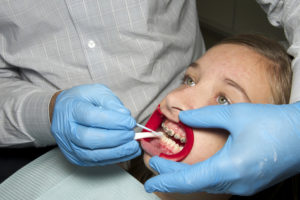
Do You Need Orthodontics?
When battling tooth decay, gum disease, bad breath and more, seek out a dentist. If you want to correct jaw, teeth, alignment, and bite issues, seek out an orthodontist. You may find yourself visiting both often if you receive braces as a child and then later as an adult or teen. Most orthodontists are trained to correct jaw and bite problems in children. You should always take your child in to see an orthodontist by age 7 if you already haven’t. The American Association of Orthodontics recommends this, as major bite and alignment issues of the jaws and teeth can be corrected easily when young. As a person grows older, the jaw hardens and becomes more permanently fixed, and oral health problems are much harder to correct.
If you are deciding to invest in braces, take a look at your teeth. Are they crooked? Do you find that either the upper or lower jaw overlaps the other significantly? Do you have problems speaking, eating, biting or chewing at times? You could benefit from orthodontics! Most people can significantly improve their oral health and their happiness (from having a beautiful smile) if they choose to see an orthodontist for help with their smile.
Dr. Hardy’s Office
Dr. Hardy is an award-winning orthodontist in Lakewood, CO. He is an active member of the American Dental Association and the American Association of Orthodontics. Dr. Hardy works with a team every day to make sure his patients young and old are cared for. At his center, he offers patients the option of getting ceramic, clear braces, traditional metal braces, lingual braces and Invisalign treatment. He can perform surgical orthodontics if needed and pediatric orthodontics. When choosing a center for your family, you want one that can treat patients of all ages and a center whose staff knows how to work really well with children. You can find that at Dr. Hardy’s Belmar Orthodontics office by calling (303) 225-9016!

